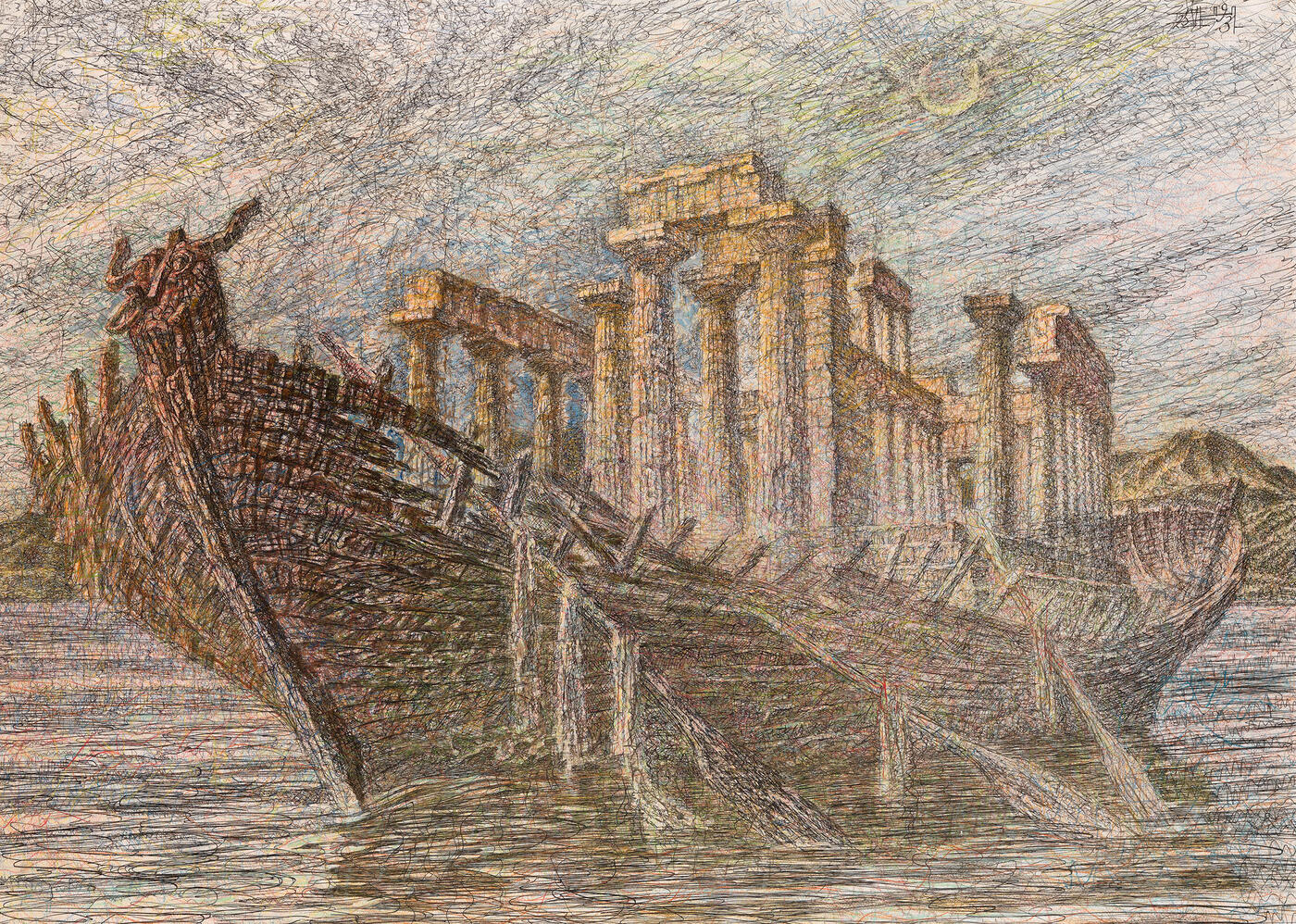MacDougall's Russian Art Auctions 27-30 May 2012
27 May 2012

* 357. PLAVINSKY, DMITRY (B. 1937)
Mirage in the Aegean Sea, signed with a monogram and dated “25. VI. 93”.
Ink, coloured pencils and watercolour on paper, 80 by 112 cm.
20,000–30,000 GBP
Provenance: Acquired directly from the artist, New York, c. 1994.
Collection of the Duke University Museum of Art, North Carolina.
Sold to a private collector to benefit the acquisition fund of the Duke University Museum of Art.
Acquired by SDZY Contemporary, New York, USA.
Private collection, USA.
Authenticity of the work has been confirmed by the artist.
Exhibited: A Selection of Works by Contemporary Russian Artists, SDZY Contemporary, New York, January 2011.
This is the original 1993 iconic image that served to inspire and guide the artist’s later 1995 revision work of the same name. It is reportedly Plavinsky’s largest work on paper from his career spanning about half a century.
It emerges from the collection of the Duke University Museum of Art (now the Nasher Museum of Art). When previously under the leadership of museum director Dr Michael P. Mezzatesta, the Duke
University Museum of Art amassed one of the most important collections of Russian Art in the United States, each work carefully selected by its pioneering director, an expert enthusiast of this particular genre.
A stunning piece, Mirage in the Aegean Sea revives ghostly images of the artist’s famous Moscow etching Viking Ship (1976). Critic Alexander Jakimovich regards this work, created when the artist resided in New York, as being closer to fulfilling the artist’s aforementioned earlier vision, describing the present
image as appearing to be “clearer” and more readable, not just because of its monumental size and utilization of a mixed variety of colourful media and techniques. “Plavinsky obviously wanted to define more precisely what he had to say... the biomorphic and mineral implications fall away, and we observe the
unmistakable body of an ancient ship.”
“It was a winter in the seventies,” Plavinsky later reminisced in regards to his captivating inspirations
for this iconic work. “In Novgorod, on the shore of Ilmen lake, I photographed the shells of fishermen’s longboats, crashed by storm and by time. On the dazzling white snow, those majestic vestiges of struggle and perdition conjured primal images of Noah’s Ark lost in the eternal snow of the Ararat Mountain,
along with shells of ships that belonged to the Vikings, those fearless seafarers who reached the coasts of America long before Columbus did. There were many works in which I used the boat as a symbol of conquering infinite spaces, as a connection between continents and islands, a victory over the elements: among these are... American works on the same subject, [including] Mirage in the Aegean Sea.”
Leading Russian Art historian John E. Bowlt regards the imagery of the Mirage in the Aegean Sea as a defining work, where “what seemed to symbolize temporal and aesthetic permanence suddenly
yields to the greater energy of the circular passage of time.”
Notes on symbols:
* Indicates 5% Import Duty Charge applies.
Ω Indicates 20% Import Duty Charge applies.
§ Indicates Artist's Resale Right applies.
† Indicates Standard VAT scheme applies, and the rate of 20% VAT will be charged on both hammer price and premium.